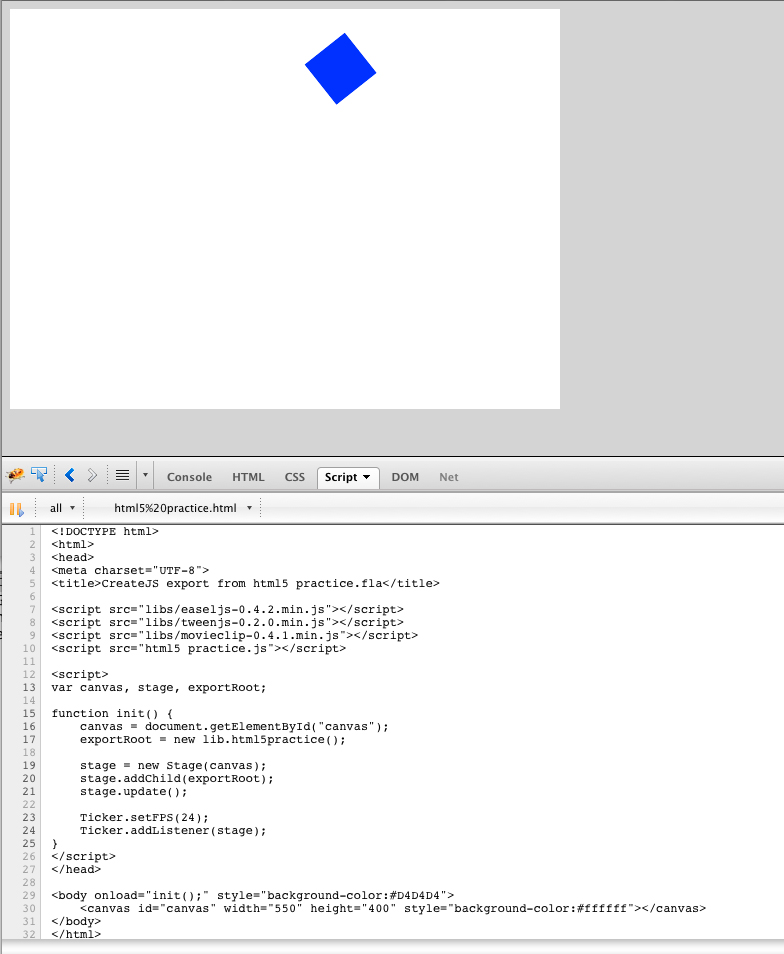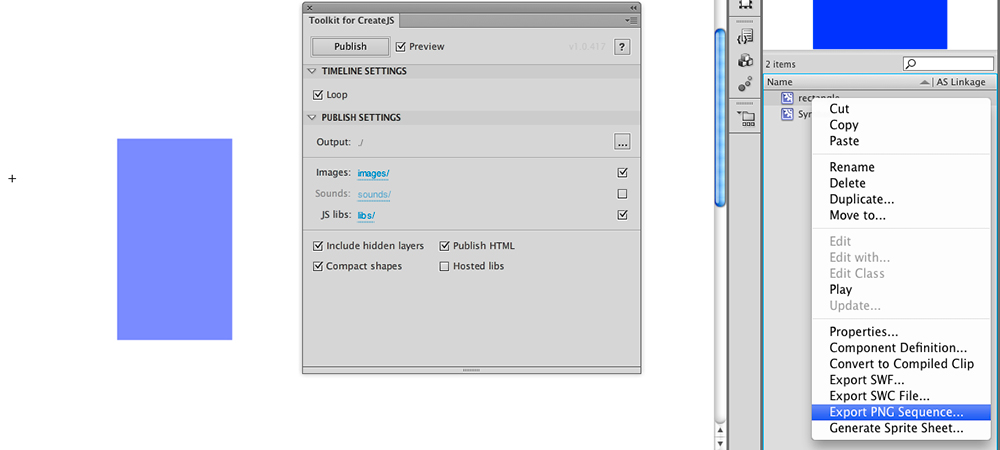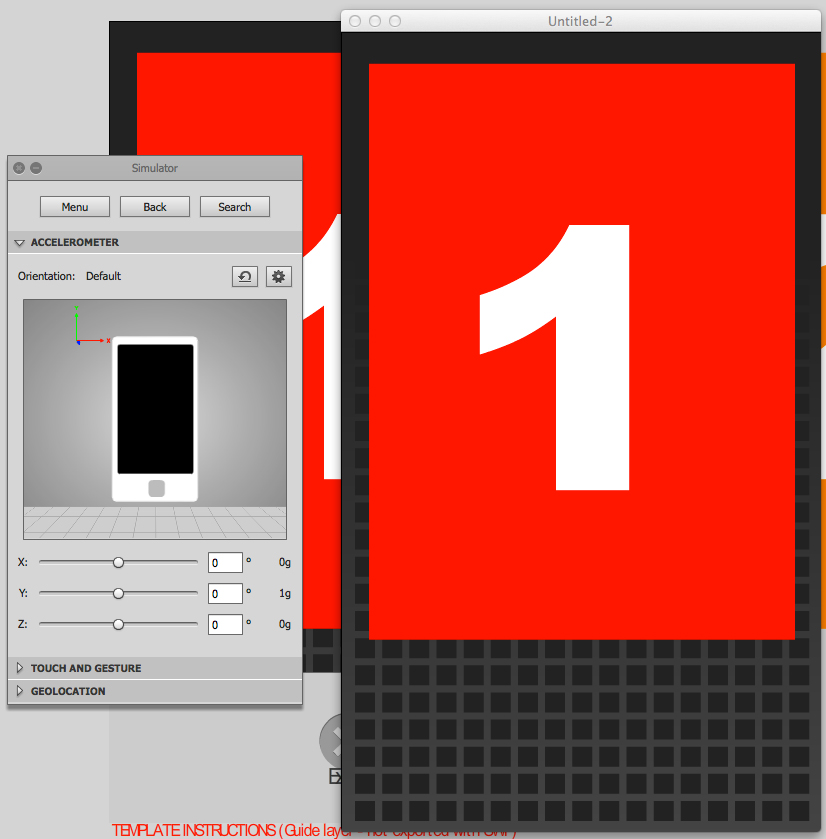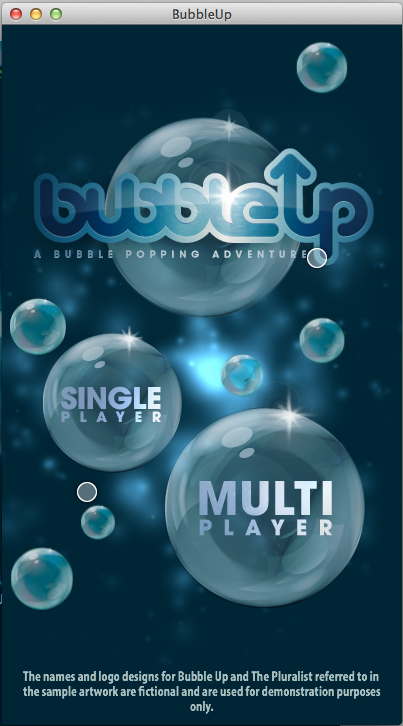Software Review
Adobe Flash Professional CS6
 Publisher: Adobe
Publisher: Adobe
Platforms: PC & Mac
Description: 2D animation and interactive programs for the web and mobile devices
MSRP: $699.99 New, $99 Upgrade, $139.95 student pricing
Expected Release: Available Now
Official Website: http://www.adobe.com
Samples: Click Here
Demo: Click Here
Special Discount: N/A
Critique Issue: Issue #77 (07/12)
Critiqued By: Michael J. Muwanguzi
Final Score: 9.3
The last couple of years have seen huge changes on the landscape of internet media devices and the type of content that keep users constantly connected. The internet has evolved from a place to get information by text and images, to video and audio presentation, to its latest transformation as a space for socializing and keeping connected. Through much of this web metamorphosis, Flash has supported artists and developers with a means to replace static images with animation, dynamic interfaces over stale looking box links, and custom interactive media that seemed our of reach for people without advanced programming skills. Since its inception, Flash has been a bridge in providing simple solutions to these types of complex programming challenges.
Today, though, despite what Flash has done for the internet and its builders, the climate has drastically changed presenting a frigid reception to the once indispensable toolset. New media devices, like the Apple iPad (with its huge adoption rate), have decided to freeze out the plugin from being used and in so doing splinter the market on utilizing it in production. On top of that, the rise of HTML 5 has finally brought a way for developers to create rich media without having to depend on complicated scripting or purchased software. These big changes beg the question “Is Flash still relevant anymore?” In Flash Professional CS6, Adobe has made some integral additions to answer that very question.
Ease of Use
If you are new to Flash with this version, you’ll find that getting started with the basics of animation is a pretty low learning curve. The process has stayed relatively untouched except for the innovation of the new motion tween that makes use of the motion editor. Using shapes or symbols from the library, transforming their properties on the stage or in the motion editor, and attaching scriptable actions have been untouched in this version. It’s not broken, so no need to fix it. But if you want to find out more about how to work in Flash, check out these previous reviews here.
One new operation that will prove useful to developers of Flash games, or really any type of interactivity, is the sprite sheet generator. In the past, developers had the choice of either leaving repeatable animations within a movie clip or exporting out the frames in a gif or jpeg sequence. The former method would slow down playback and the latter would take a long time to import and arrange in a photo imaging program. With the new sprite sheet generator, users can convert one or more movie clips directly in the Library. The single sprite sheet contains each frame of the symbol states as well as the coordinates for where they exist on the layout. These bitmap sprite sheets offer an increase in performance over the original vector shapes in how they can be referenced through the GPU of the end-user’s device.
The Sprite Generator processes out library graphics quickly and easily to be used for games and web application.
Depth of Options
As developers are distancing themselves more from the native .swf format and flash plugin, the most important addition to Flash Professional CS6 is the ability to export files for Adobe AIR and HTML5. Adobe AIR 3.2 runtime can output to a wide range of devices that include Android 2.2 or higher and the Apple iOS platform. This same AIR product can be repurposed for the desktop as a standalone program as well. One very essential difference between AIR apps and Flash Player programs is that a prepackaged AIR runtime can export an application that is independent of an external plugin. The advantage being that at the time of install you don’t have to deal with annoying updates. So whether you are just testing out your program on your own or purchase an app online, there is no longer a need to wait for the latest Flash plugin.
Aside from the use of Adobe AIR to reach multiple devices, being able to export animation to HTML5 is an important feature that will keep Flash relevant in this next stage of web development. In conjunction with the CreateJS framework, Flash CS6 is able to export animation and assets into an HTML5 document while using CreateJS to translate the actionscript functionality into javascript. Breaking CreateJS into its most basic libraries: EaselJS helps display the objects used on the canvas, TweenJS takes care of tweening and animation, and the SoundJS provides an API for making use of HTML5’s audio tags for playing sound on the web. The only unfortunate part is when trying to export in HTML5 is that the new motion tween is not supported, only classic and shape tween. It’s not a huge drawback because you can still accomplish the same animation with classic tween. All that aside, developers can still make use of their Flash experience without sacrificing the potential audience available to them on the web through HTML5.

Being able to export simple animations in HTML5 will help Flash developers leverage the power of Flash to do animations that would take longer to code outright.
Development resources for AIR have been extended substantially in this new version of Flash Professional CS6. A powerful feature is the ability to use extensions that are native to specific devices in iOS, Android, Blackberry, Windows and Mac environments. Since every Android and iOS platform have exclusive libraries for controlling its components, it would make sense that the AIR SDK’s library can only cover so much. Being able to go to Adobe and downloading particular extensions enables developers to make a more focused experience on a device that leverages its own uniqueness through code.
Once the proper extensions have been installed and applied to the AIR app, Flash provides a couple of ways to test out how your application works before final release. In the previous Flash versions, users could develop their application within Flash and then export it as an AIR package and test within Adobe Device Central, an environment that mimics the characteristics of a wide variety of mobile devices on the market. Now with Flash Professional CS6, not only can developers simulate features in devices like accelerometer, touch, and gesture as a part of the Flash program, they also have the option of testing over Wi-Fi network. By setting up a connection through the Publish settings, Flash will package the IP address with the application in order to automatically connect to your networked mobile device.
Lastly, keeping the AIR SDK up-to-date has been made much easier. Previously users had to go through a long process of installing components in various locations on your machine before running Flash. Now, by just clicking on the “Manage AIR SDK” command in the Help menu, users do the same thing with on click and no extra hassle.
Performance
The main day-to-day operations within Flash are working as well as they ever have. The real performance boost comes not necessarily within Flash, but from how Flash empowers devices that run its applications. The Stage 3D API provides game developers with an interface to better manage the GPU acceleration. With this access, developers are able to render huge amounts of z-buffered triangles in HD at close to 60 fps. Coupling that with the Direct render mode in the Publishing settings, artists are able to test and see their work directly in the browser as it will appear to the end-user.
The new SWF compression and PNG sequence option do not actually affect how you work in Flash, but will definitely boost performance in the applications that use them. The new swf compression utilizes the LZMA algorithm. It has a 40% increase in efficiency, especially helpful for files that have a lot of content and scripting. With export PNG sequence, any type of animated content within the Flash Library can be selected and exported into a sequence of PNG files. This enables web developers to have high quality images with transparency that can be used on the web independently from Flash as well as useful to game developers who regularly use this format for animated graphics in games.

Having the option to export in PNG allows developers quickly create high quality assets that have transparency.
Value
The new features to Flash Professional CS6 make this software viable in an internet culture that continually shifts and expands. HTML5 presents a lot of dynamic content that only advanced coders were privy too. With Flash CS6’s ability to export animation and simple interactivity to HTML5, developers with Flash experience can quickly create that content, and through observation of the code, learn how their content translates over to this new format. Adding to that, Flash can reach a wide range of platforms like mobile devices, tablets, desktops, and HDTV with applications containing the AIR runtime; rendering annoying initial updates unnecessary upon launch. Flash Professional CS6 focuses on keeping their main toolset dependable while opening the door for their applications to have larger mainstream visibility than ever before.
Final Comments
With each passing iteration of Flash, the program expands to meet the needs of the times. Recently, it’s come under fire because of the limitations of using Flash player. Rather than try to bolster something that was growing out of favor, the Flash development team expanded the options for where Flash applications can be deployed and how they can be experienced. Developers can now make focused development, making the most of unique interactivity on specific brands and layouts. The output is optimized to leverage hardware and get the best fidelity during use. Whether you are an animator, game developer, or creator of media content for the web, Flash Professional CS6 is able to cover everything that you need.
|
Breakdown
|
|
|
Ease of Use
|
9 |
|
Depth of Options
|
10 |
|
Performance
|
9 |
|
Value vs. Cost
|
9 |
|
Overall Score |
9.3 |


